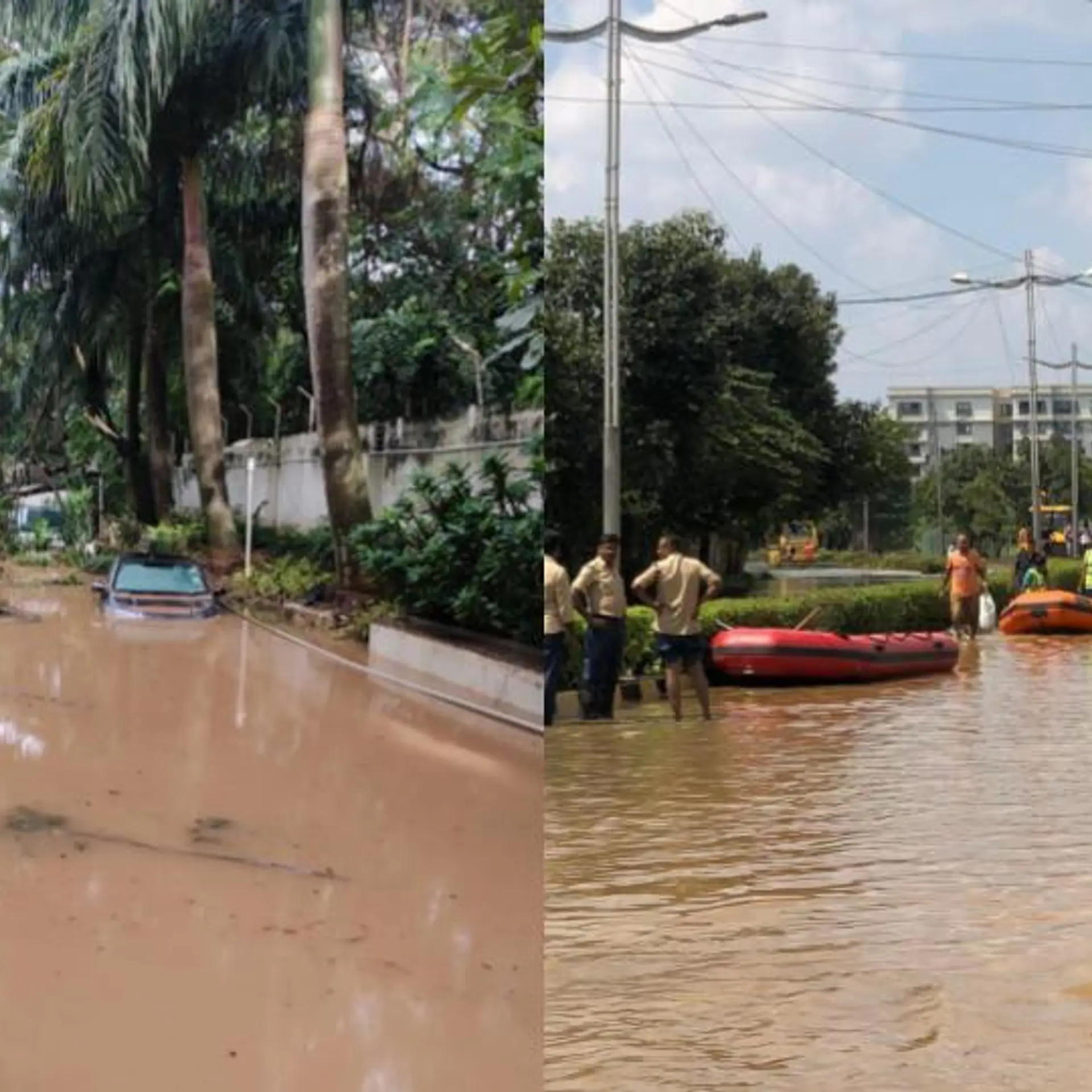[TC-I Changemakers] A book for every child — the mission for Pratham Books
Sunday April 27, 2008 , 8 min Read
The ThinkChange India staff is committed to providing our readers with interviews with people we believe are at the brink of something special but have for the most part been overlooked by the mainstream media. Readers will be able to see other conversations under our TC-I Changemakers tab.
This week we had the opportunity to speak with Gautam John, who works for Pratham Books. We have written

about Pratham in the past, but have yet to write about this part of the organization. Pratham Books’ goal is a book in every child’s hand — by no means an easy task. Pratham Books also has its own blog, which you can read here, and also has a Facebook group — click here to join. Utilizing the wonders of Skype, TC-I’s very own Vinay Ganti was able to speak with Gautam (who is currently situated in Bangalore) about the amazing things Pratham Books has done and what they hope to do looking forward.
Vinay Ganti: I wanted to first thank you on behalf of the ThinkChange india community for taking the time to speak with us today. Why don’t we start with the obvious question of what exactly Pratham Books does and why it was started?
Gautam John: At the simplest level, the goal of Pratham Books is to place a book in every child’s hand in India. Or to be more emphatic, we want to provide access to books to the last child in the last village in India and promote reading as a habit. The need for Pratham Books arose four years ago and came out of the umbrella organization’s activities. Pratham is a large scale movement aimed to make every child in India literate. [Note: A videocast with a Vikas Taneja, a member of Pratham USA’s Executive Committee, will be posted in the near future.]
The chairperson of Pratham Books, Rohini Nilekani is also the chairperson of the Akshara Foundation, whose goal is to have every child in school and learning well, across the state of Karnataka. Pratham Books supplies books to the Akshara run programs.
VG: This goal is by no means an easy task. The first issue that comes to mind is how many of the poor will be able to afford to purchase these books.
GJ: Pratham Books was designed specifically with this issue in mind, and is just as much a proof of concept as it is a publishing house. We wanted to show other publishing companies that one can profitably and sustainably provide books to children, and for this reason none of our books are priced at more than Rs 25. We have also recently adapted our books to a story card format, abridging the content to fit in an A5 sheet that is richly illustrated, laminated and is priced at Rs. 1.50.
We also maintain a relatively small team under the Pratham Books roof and outsource most of the production of these books. For authors, they either come forward or we commission them on a book by book basis. These books are then translated up to eight other languages besides the author’s mother tongue, ranging from English to Telugu to Gujarati. We have, thus far, published over 125 different books in 6-8 different languages, which equates to over a 1000 different books per year that our customers can choose from

The low pricing strategy does not force us to sacrifice on quality either. We provide very durable, high quality books that are fully laminated. We want to make reading attractive. A great part of the joy of reading is looking at the illustrations and the quality of the book itself.
VG: What level of scale has the organization achieved with this model?
GJ: Last year Pratham Books shipped over 1 million books, which we believe is proof for the publishing industry that this low-cost model can work. One of the hurdles in convincing such publishing houses to participate in such a low-cost strategy is that they currently are obsessed with the per unit gross margins for their books. What Pratham Books aims to show them is that, while the per unit profits may not seem significant, when one looks at the aggregate revenues the low-cost model is worthwhile for any publishing company to partake in.
VG: How successful is this business model with regard to enabling Pratham Books operate in a self-sufficient manner?
GJ: Right now, the goal for Pratham Books is self-sustainability but as we are currently looking to ramp up print volumes and distribution significantly so external funding will play an important part in this interim build-out phase. Pratham Books was built from the onset to be a standalone business model. Once again, this is a wakeup call to the publishing industry to show them there does exist a commercially viable mass market that currently is not being served. Right now, there is a lack of available content for children under the age of 14.
VG: Clearly this model presents many challenges. A few that come to mind is sourcing the authors and content. Also, what about distribution? How do you get the books physically in the hands of these children?
GJ: Actually, there isn’t necessarily a paucity of good writers, but there is a paucity of channels especially low-cost channels to distribute such works. Creative work is pretty easy to come by, as authors come to us pretty regularly or they are easy to find. But, you are right, distribution does have significant challenges.
First, we have to keep our overhead very low, because the margins already are very small and so we cannot afford to allow our costs to escalate. Since we have a price ceiling of Rs. 25 on our books, there is very little fat to cut. To address this, we currently focus on bulk distribution and our primary customers are other non-profits, governments, schools and so forth. We do not really have a retail presence yet as we cannot afford to pay the mark-up. We have begun building networks with local non-profits and organizations that may assist us in both the retail and bulk distribution models. Also, people can come directly into the office or go on the website to purchase the books as well.
Along similar lines to the website, Pratham Books has begun researching the ability to utilize the Internet and other technologies on-line to overcome many of these distributional hurdles. The on-line space is still in its infancy with regard to India, but it definitely provides many opportunities to better democratize the publishing space. Pratham Books does have a more focused strategy on how to leverage the Internet that will become public in the following months.
VG: Yeah, it seems that today literacy and technology is effectively inseparable. Looking forward what other initiatives is Pratham Books planning? Also right now, Pratham Books (and Pratham generally) focuses on early childhood education, do you see expansion beyond that?
GJ: I will answer the second question first. Pratham Books’ mission arose primarily out of the needs of Pratham generally, so it is focused on the under 14 year-old space for now. However, Pratham Books is looking for ways to grow beyond that, like subject specific offerings in biology or geography. As we look to older students, however, other players already exist in this space and there are organizations such as Connexion’s, FlexBooks, WikiEducator and WikiTextbook which are in the space of developing open-source ways to build textbooks and other school related curriculum. However, Pratham Books may have a role in the future in ‘Indianizing’ these offerings.
In addition to some major pushes to incorporate the Internet and other technologies that I spoke to briefly above, Pratham Books is also updating other aspects of the business. For example, we are transitioning to Ubuntu and using other open-source software in the office to reduce costs. We are also looking to redo the website to allow for a shopping cart system to purchase books like an Amazon.com.
VG: Shifting gears, can you speak to your own personal background and your reasons for coming to Pratham Books?
GJ: Sure. I was a lawyer and then ran my own business which was acquired. After those careers in the for-profit sector I decided to shift my focus. I have always wanted to work in the non-profit sector, and Pratham Books was able to put together a very solid goal-oriented project for me. I have been here for a few months now and have been really impressed with the organization and have agree to stay on for another 12-15 months to push another project focused on utilizing the internet for many of our goals.
VG: Thanks again Gautam for taking the time to speak with ThinkChange India and sharing Pratham Books’ story with our community. Are there any last words you wish to add?
GJ: We are focused on our mission: a book in every child’s hand; one in the hands of the last child in the last village in India.






